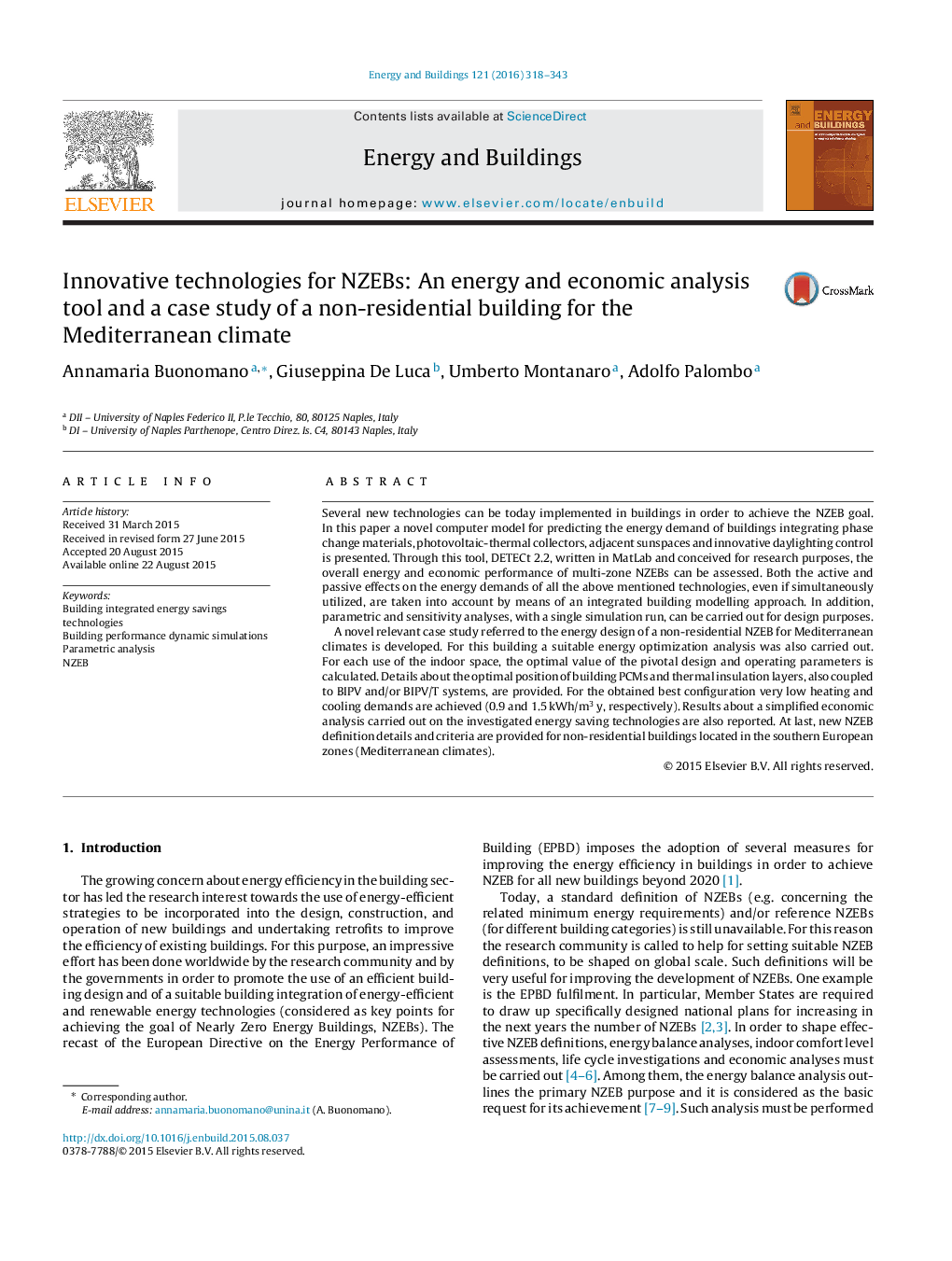| کد مقاله | کد نشریه | سال انتشار | مقاله انگلیسی | نسخه تمام متن |
|---|---|---|---|---|
| 262195 | 504014 | 2016 | 26 صفحه PDF | دانلود رایگان |

• Energy models for PCM, BIPV, BIPV/T, sunspace, building lighting are presented.
• Enhancements to a dynamic BEPS tool for whole building analyses and presented.
• A case study related to a non-residential NZEB for temperate climate is developed.
• Dynamic simulations and a parametric analysis for the NZEB design are performed.
• Optimal energy efficiency parameters and economic analysis results are provided.
Several new technologies can be today implemented in buildings in order to achieve the NZEB goal. In this paper a novel computer model for predicting the energy demand of buildings integrating phase change materials, photovoltaic-thermal collectors, adjacent sunspaces and innovative daylighting control is presented. Through this tool, DETECt 2.2, written in MatLab and conceived for research purposes, the overall energy and economic performance of multi-zone NZEBs can be assessed. Both the active and passive effects on the energy demands of all the above mentioned technologies, even if simultaneously utilized, are taken into account by means of an integrated building modelling approach. In addition, parametric and sensitivity analyses, with a single simulation run, can be carried out for design purposes.A novel relevant case study referred to the energy design of a non-residential NZEB for Mediterranean climates is developed. For this building a suitable energy optimization analysis was also carried out. For each use of the indoor space, the optimal value of the pivotal design and operating parameters is calculated. Details about the optimal position of building PCMs and thermal insulation layers, also coupled to BIPV and/or BIPV/T systems, are provided. For the obtained best configuration very low heating and cooling demands are achieved (0.9 and 1.5 kWh/m3 y, respectively). Results about a simplified economic analysis carried out on the investigated energy saving technologies are also reported. At last, new NZEB definition details and criteria are provided for non-residential buildings located in the southern European zones (Mediterranean climates).
Journal: Energy and Buildings - Volume 121, 1 June 2016, Pages 318–343